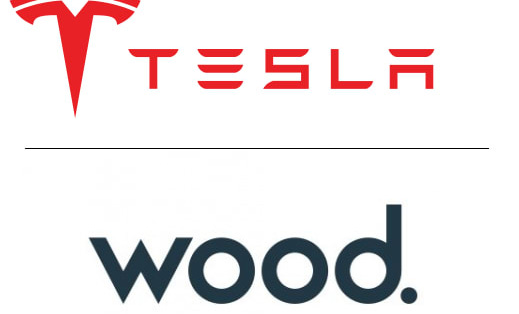Weekly Bulletin #20
Commodities Rolling Over Into A Recession? | Klarman Interview
Disclaimer
Value Situations is NOT investment advice and the author is not an investment advisor.
All content on this website and in the newsletter, and all other communication and correspondence from its author, is for informational and educational purposes only and should not in any circumstances, whether express or implied, be considered to be advice of an investment, legal or any other nature. Please carry out your own research and due diligence.
Commodities Rolling Over Into Recession?
Megatrend - An important shift in the progress of a society or of any other particular field or activity; any major movement.
In this week’s Bulletin, I discuss commodities in the context of the current macro environment, and recessionary concerns. At the outset, I’ll happily state that I am no macro-analyst, and ultimately I don’t what markets will do next ( as I don’t believe anyone can predict the future). But as a fundamental-value investor I think it is worthwhile trying to frame the current market picture to be alert to what areas of the market may throw up bargains in due course.
The past month has seen commodities slumping amid increasing fears of a recession, prompted by rising interest rates, tighter financial conditions, China’s zero COVID policy, the war in Ukraine and slowing global growth as a consequence of all these events.
There is now a growing view that inflation has peaked with the rolling over of commodity prices across energy, metals and food over the past month:
Interestingly, as the commodity sell-off intensified over the past 10 days, investors appear to have rotated back into growth/tech/duration names, with the ARK Innovation Trust ETF (ARKK) up ~14% and The Technology Select Sector SPDR Fund ETF (XLK, a proxy for US growth/tech) up ~4.6%, while energy, metals and food commodities are all down over this period, as the chart below shows:
This might suggest the inflation trade is unwinding, and is potentially signaling deflation, feeding into the recession narrative.
I see two prevailing views on what is behind this recent rotation; on the one hand, this may just be a brief bear market bounce in “oversold” tech names following the “tech wreck” earlier this year, with commodities to resume their recent upward trajectory in due course given supply issues still persist. On the other hand, it may be that inflation has peaked, the money has been made in commodity names and with a global recession looming, investors believe higher growth, duration-tech will benefit as central banks are forced to pivot to lower rates again as inflation cools and growth falls.
On reflection this past week, I subscribe to the first view - I do not believe the inflation trade is done, and my reasoning is as follows.
Recession appears to be almost consensus now, with the view that demand destruction in commodities is occurring (as evidenced by the recent rollover), initially attributable to surging inflation, but now ensured by higher interest rates. But I wonder if the market is overly focused on demand and overlooking the supply set-up for a whole range of key commodities - perhaps not surprising, given the obsession with TAM among the market-domineering growth investors of recent times.
Amid all the macro noise today, it seems to me that investors have forgotten that the supply picture for “stuff” that is essential to global megatrends such as the energy transition, demographics, urbanisation and technology (IoT, 5G, smart computing/devices etc.) is not particularly rosy. Moreover, the supply picture has worsened considerably this year by what I would regard as a new megatrend - a shifting global political order following Russia’s invasion of Ukraine, and China’s increasing resource nationalism in parallel with this. The main features of this new megatrend are deglobalisation, onshoring and rebuilding of supply chains, increased defense spending and energy security. These all require an enormous amount of more commodities than what is currently available.
It cannot be overlooked that Russia is the world’s largest exporter of key commodities such as wheat, pig iron, natural gas, and nickel, and it accounts for a significant share of coal, crude oil, and refined aluminum exports. Furthermore, Russia and its ally Belarus are also major suppliers of fertilizers, while Ukraine is a key exporter of food commodities such as wheat and sunflower seed oil. The shortages in these crucial commodities have been well documented and reported on this year.
Maybe I’m looking at the world too simplistically, but what I see now is a major global supplier of “stuff” (Russia, plus Belarus by extension) offline for the forseeable future given it’s pariah status, while Ukraine itself cannot supply what it otherwise would due to disruption from Russia’s invasion. Furthermore, we have China, India and others pursuing a self-sufficiency strategy, stockpiling stuff that the rest of the world also needs at a time of constrained supply (including buying up Russian oil). In this light, it seems clear to me that the supply of key commodities will only become more constrained as the parts of the world not allied with Russia urgently need to procure essential commodities from elsewhere. Therefore commodity inflation is unlikely to abate any time soon in my view.
There are also a number of further limiting factors that I think will lead to sustained commodity inflation.
Firstly, given rising interest rates, the financing of commodity extraction and production will be more costly, via higher debt costs and higher hurdle rates for equity risk capital, thus limiting supply that otherwise may have come onstream in a lower interest rate regime. Additionally, if there is a central bank pivot at some point, lower rates will likely stimulate demand and speculation again, leading to further inflation at a time when supply is still constrained (note it takes years to bring new mines, power plants, factories, LNG terminals etc online).
Secondly, there remains limited new investment in capacity among energy companies and miners, who remain disciplined when it comes to capex, having learned the lessons of previous cycles. Producers are content to generate excess FCF instead of pursuing growth this time around. There is no incentive to change this approach today (Charlie Munger’s “Show me the incentive, I'll show you the outcome” once again comes to mind here).
Thirdly, given climate change concerns, an ESG-conscious policy framework seems likely to persist (energy crisis or no energy crisis!), as Fatih Birol, Executive Director of the International Energy Agency stated recently at Davos:
“But, in my view, the biggest part of the response comes from putting emphasis on clean energy, renewables, energy efficiency and, in the countries where they have nuclear capacity, increasing nuclear production there.”
Nuclear aside, the messaging from this policy approach will serve to stymie investment in the “dirty” business of mining or drilling for key commodities, again making it difficult to finance new supply.
Finally, rising interest rates in response to inflation won’t solve the supply constraints that are the primary driver of current inflation to begin with (rather than loose financial conditions) - putting it crudely, lower rates won’t change Putin’s mind or change Xi’s strategy. Furthermore, wholesale demand destruction is unlikely given (1) the enormous, policy-driven new investment to come for re-shoring/on-shoring, defense spending, energy infrastructure and security (which is urgently required “post-Russia”), and (2) the commodities in demand are essential to society (food and energy), so demand will hold up as the global population continues to grow. And remember this all comes on top of the structural demand for commodities as part of the energy transition and other megatrends already underway.
In summary, I find it hard to see how demand destruction and commodity deflation will occur beyond any near-term, temporary recession or slowdown given the megatrends in motion. On this basis, it seems highly probably that commodity inflation will persist, or at lease remain elevated above historic levels. Quite possibly stagflation is the likely outcome now, given that both supply constraints post-Ukraine invasion and higher interest rates will limit growth, and possibly cause economic contraction for a time.
So that’s my amateur macro take, but what does this mean for equity investors?
Persistent, high inflation means erosion of purchasing power and capital, and therefore necessitates (intelligent) investing given the backdrop today. As I’ve written before, real assets (commodities, real estate) tend to do well in inflationary/stagflationary environments, and commodity-linked equities offer torque to this theme:
Source: Stenos Signals #5 – How do you trade stagflation?
In my view, the current decline in commodities may present an interesting entry point, particularly in niche areas in food, energy (uranium, oil), energy infrastructure/services, strategic/green metals (e.g. tin, copper), real estate (e.g. selected REITs, homebuilders with land banks). Gold and silver are also looking more interesting now too.
Separate to commodities specifically, at such a time of heightened market risk with the potential for a significant drawdown if earnings contract, I also see uncorrelated event-driven and overlooked special situations as offering attractive risk-adjusted opportunities in the current environment.
I look forward to sharing future ideas within these themes with paying subscribers.
Any Other Business
For this week’s AOB I’m sharing some quotes from a recent Harvard Business School interview with Seth Klarman, of the Baupost Group. A video of the interview was shared on YouTube but appears to have been taken down, so instead I’m sharing an interesting summary of quotes compiled by the excellent Transcript newsletter.
The Transcript collates notes and quotes from earnings calls, interviews and other sources and publishes these in a weekly newsletter. I highly recommend reading it.
Why Not Subscribe to the Paid Tier?
If you find the ideas in this newsletter interesting, please considering signing up to the newly launched Paid Tier.
You can read more about the paid offering here.
This newsletter is 100% reader supported and free from conflicts of interest or other commercial considerations. In writing Value Situations my job is essentially to generate ideas for subscribers that supplements their own idea origination process.
Furthermore, I believe the value proposition for paying subscribers is compelling. I am a former private equity/special sits investor that has worked with one of the largest alternative investment firms in the world, and so paying subscribers will be getting thoughtful, buy-side quality ideas and analysis for a very small fraction of the cost of employing a buy-side analyst full-time.
If you find this newsletter interesting, please also consider sharing it with friends and colleagues by clicking the Share button below.
Here’s what other investors are saying about Value Situations:






Value Situations was named as one of the Top 100 Must Follow Stock Research accounts by Edwin Dorsey of The Bear Cave Newsletter:


















